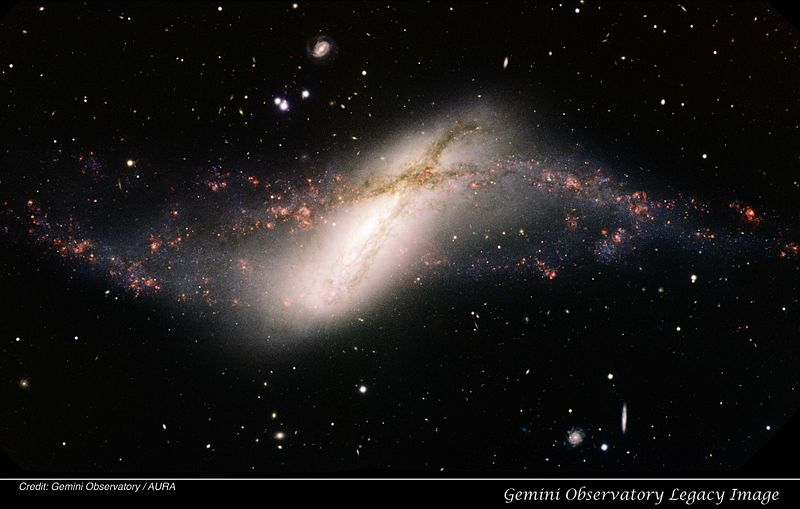2. Gravitation¶
In this chapter, we introduce the basics of gravitational dynamics: how does mass give rise to forces that lead to the motion of planets, stars, gas, and dark matter in the Universe? The next chapters discuss how masses move under the influence of the gravitational force—these motions we refer to as “orbits”—which is the realm of classical mechanics, and we introduce the important concept of dynamical equilibrium.
In this first part of the book, we apply these concepts to mass distributions that are spherically symmetric. Real galaxies look like the galaxies shown in Figure 2.1.
Figure 2.1: M101 (European Space Agency & NASA) and NGC 660 (Gemini Observatory, AURA).
One might therefore wonder how useful it is to study spherical mass distributions, when most galaxies are so far from being spherically symmetric. We will see in later chapters that, even though mass distributions can be quite far from spherical, many of the properties of non-spherical distributions can be understood by approximating these distributions with some equivalent spherical distribution. Similarly, many of the concepts that we will introduce in this chapter (like that of dynamical time and the circular velocity) remain similar for non-spherical distributions. And spherical mass distributions provide a simple way to introduce many of the concepts that are relevant for all galaxies.



